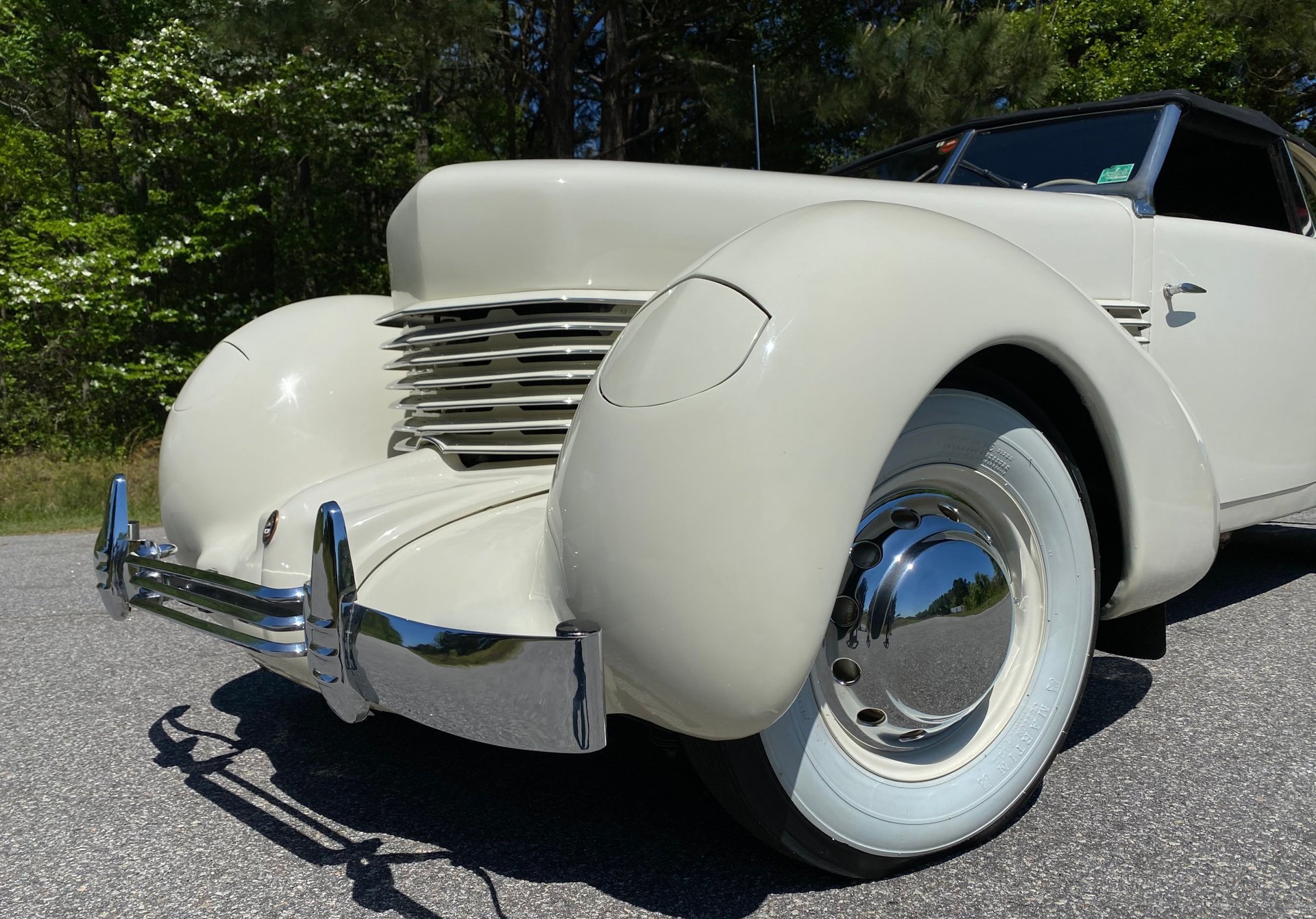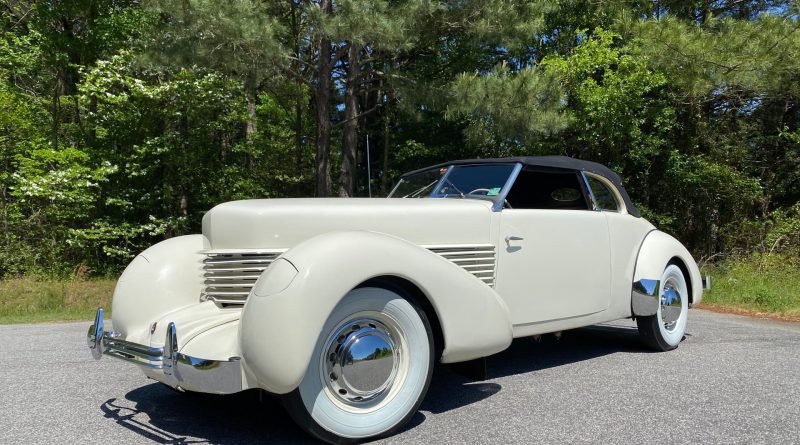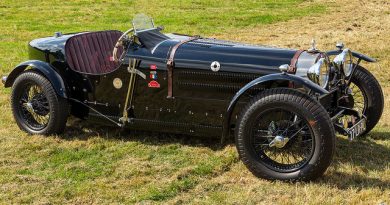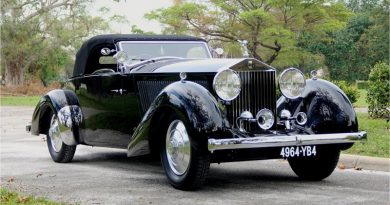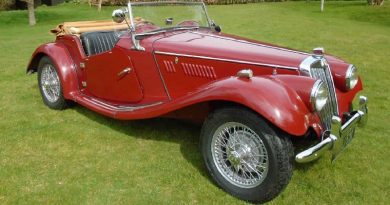1936 Cord 810 Phaeton
The Cord was produced by the Cord Automobile division of the Auburn Automobile Company in 1936 and 1937. It was the first American-designed and built front wheel drive car with independent front suspension. Both year models were the first to offer hidden headlights, steering wheel horn rim [a safety feature], covered locking gas filler and many more unique features.
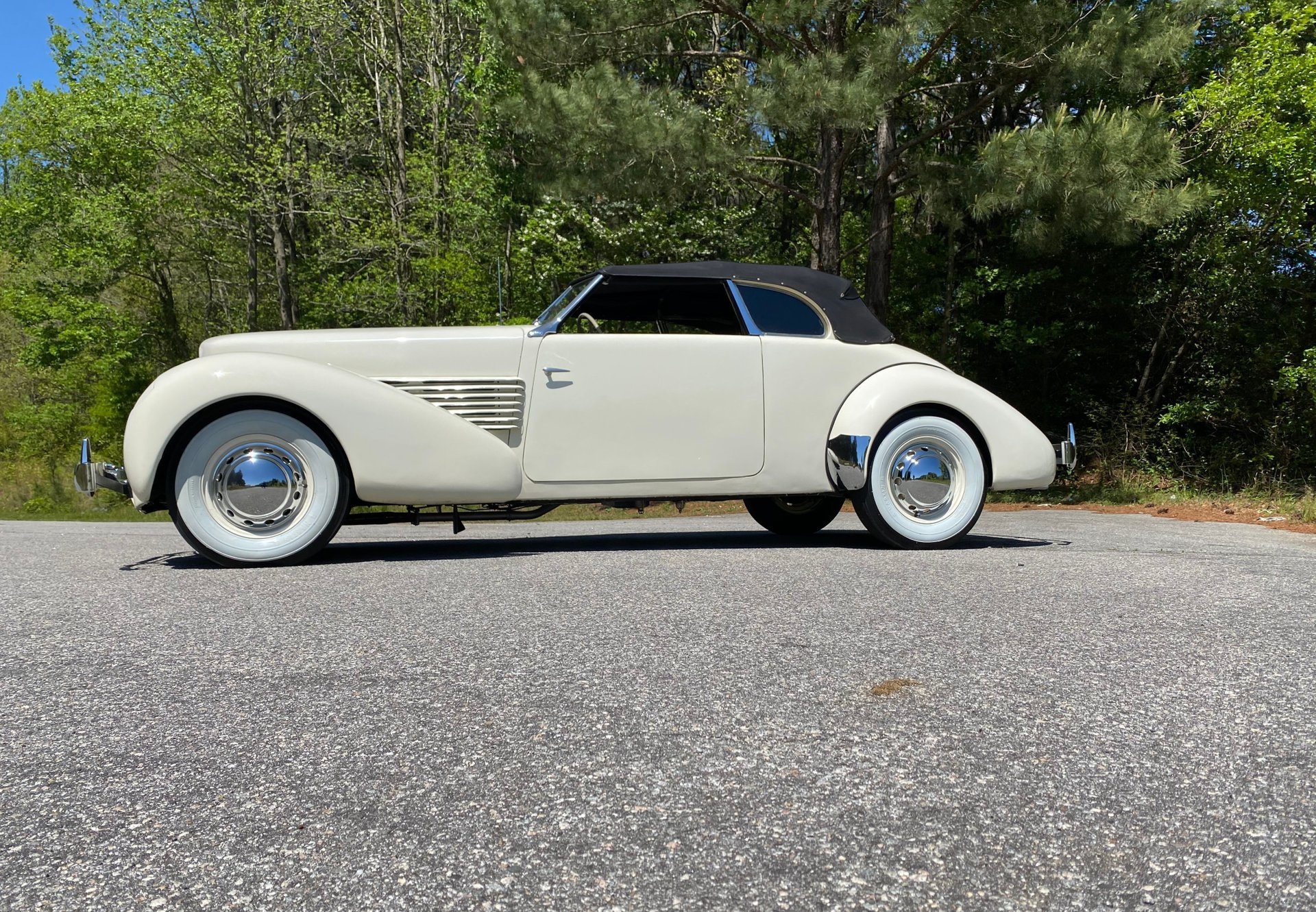
The design of the Cord 810 remains one of the most distinctive of the 20th Century. In 1996, American Heritage Magazine proclaimed the Cord 810 sedan ‘The Single Most Beautiful American Car’.
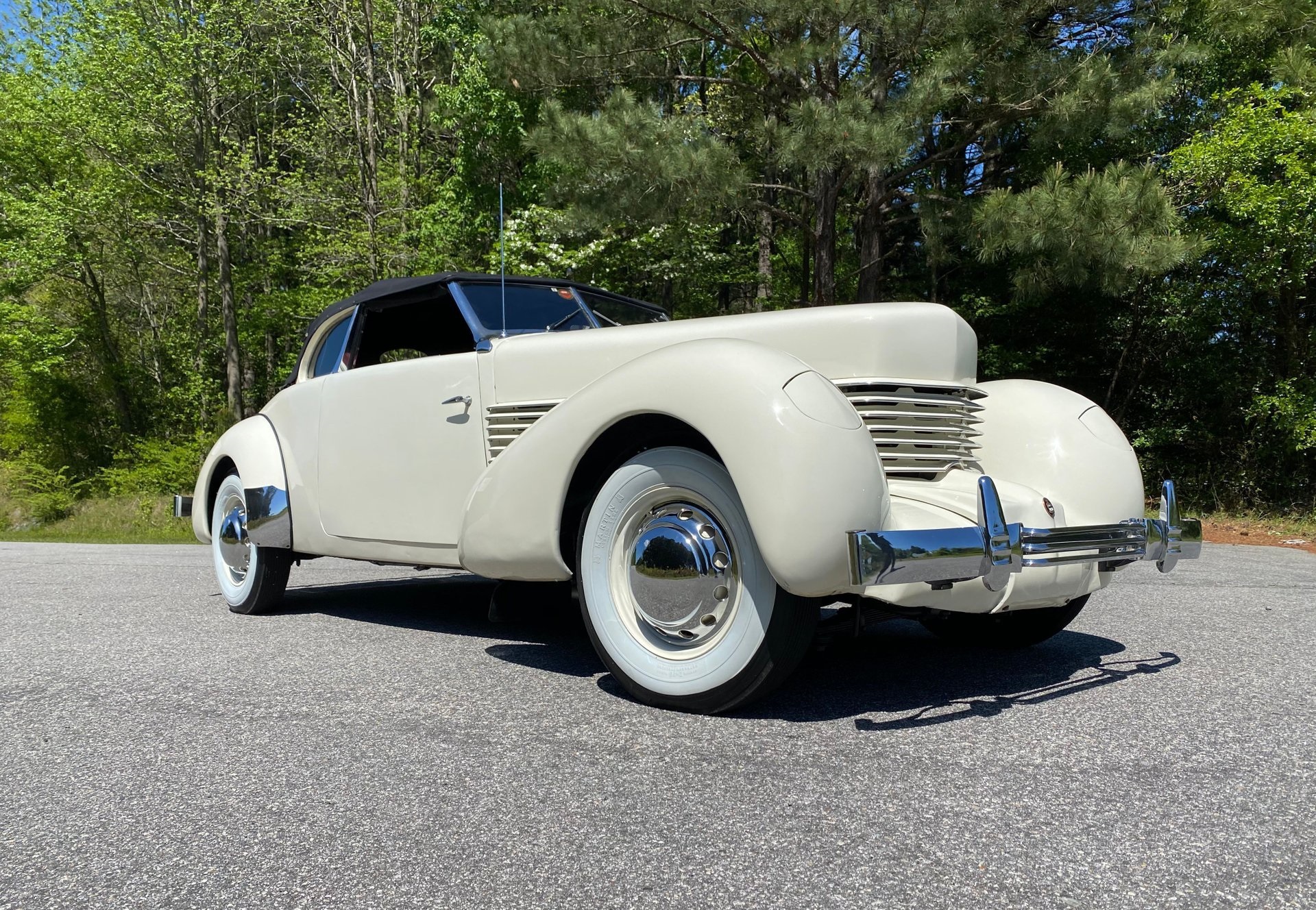
1936 Cord 810 Phaeton:
An industry first — America’s first front wheel drive, L-29, based on the Miller patent
An industry first — Hidden headlamps (a world-first),
An industry first — The famous louvered ‘coffin-nose hood’ [wraparound grille]
An industry first — Steering wheel horn ring, patented,
An industry first — Locking covered gas cap,
An industry first — Exterior concealed filler for coolant,
An industry first — Exterior concealed filler for engine oil,
An industry first — Push button engine oil gage which doubled as the gas gage
An industry first — Engine-turned dashboard, complete instrumentation, including tachometer, and radio
An industry first — Rear-hinged hood,
An industry first — Elimination of the era-essential running boards,
An industry first — Hidden door hinges,
An industry first — A ‘step-down’ floor,
An industry first — Unibody construction

The Phaeton Sedan had roll-down rear quarter windows, another Cord first for an American production model
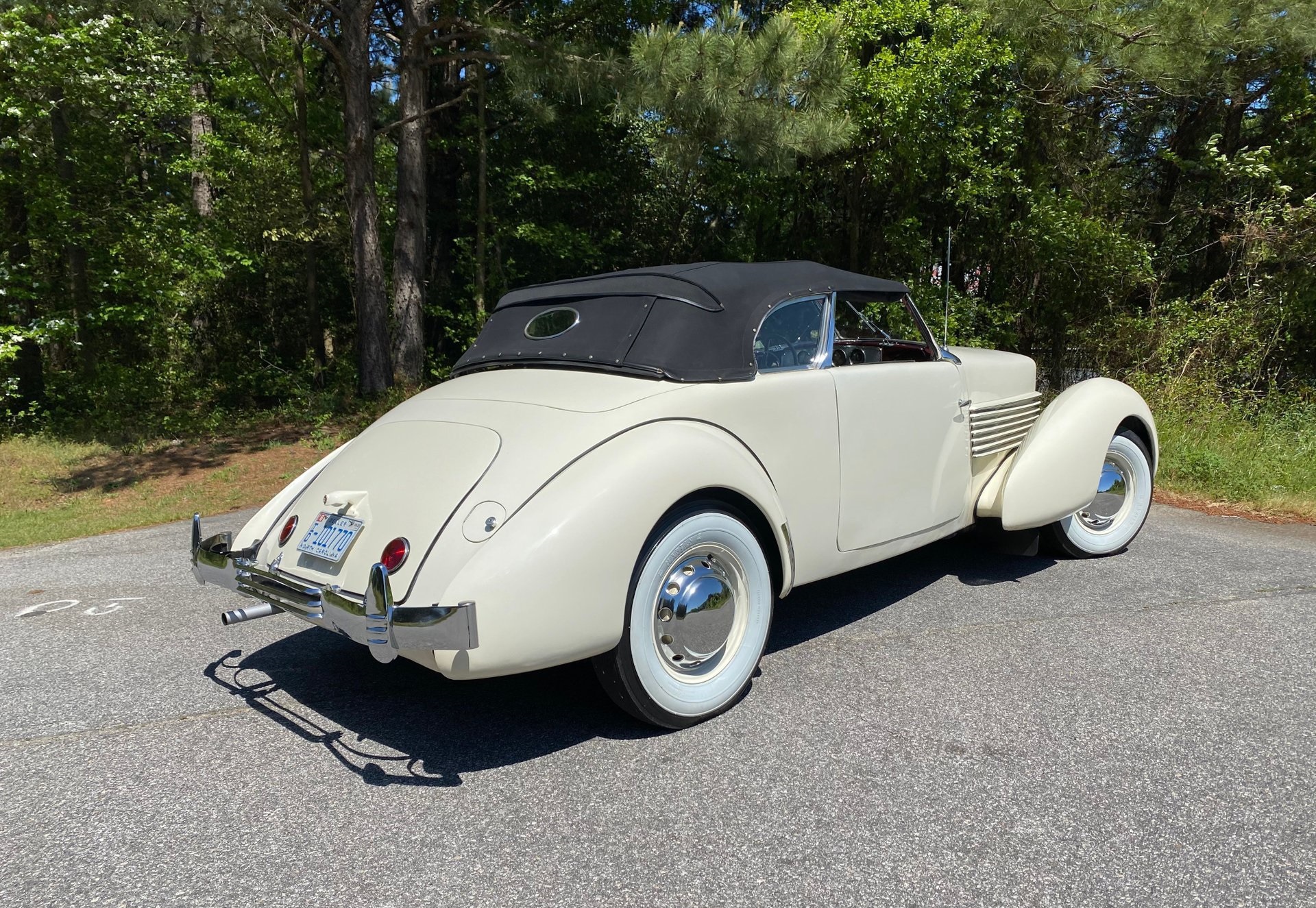
Mechanically, The correct Flat Head 8 engine turns on immediately and has a harmonious muscle car tone. The 4 Speed transmission operates well and shifts into gears well. The clutch is smooth and brakes are very true. The car is very modern for the generation, and sounds very muscular. The car is an absolute blast to drive.
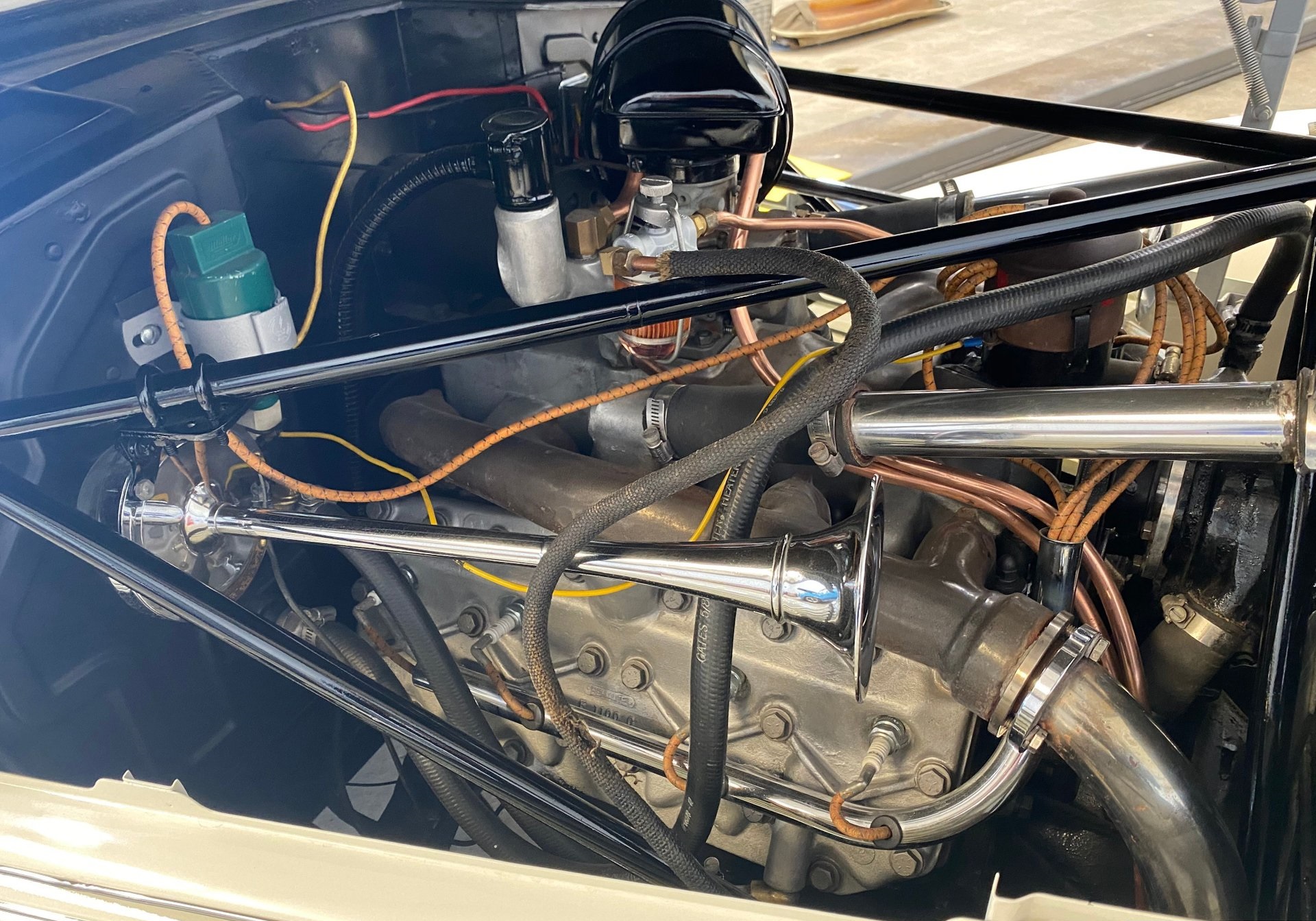
You may have noticed something else about the car. Not the colour, white is normal. Yes, it is a convertible – and putting the hood up takes two people and is a task best attempted at least five minutes before the onset of any precipitation if you wish to keep self and automobile upholstery dry but that isn’t it either.

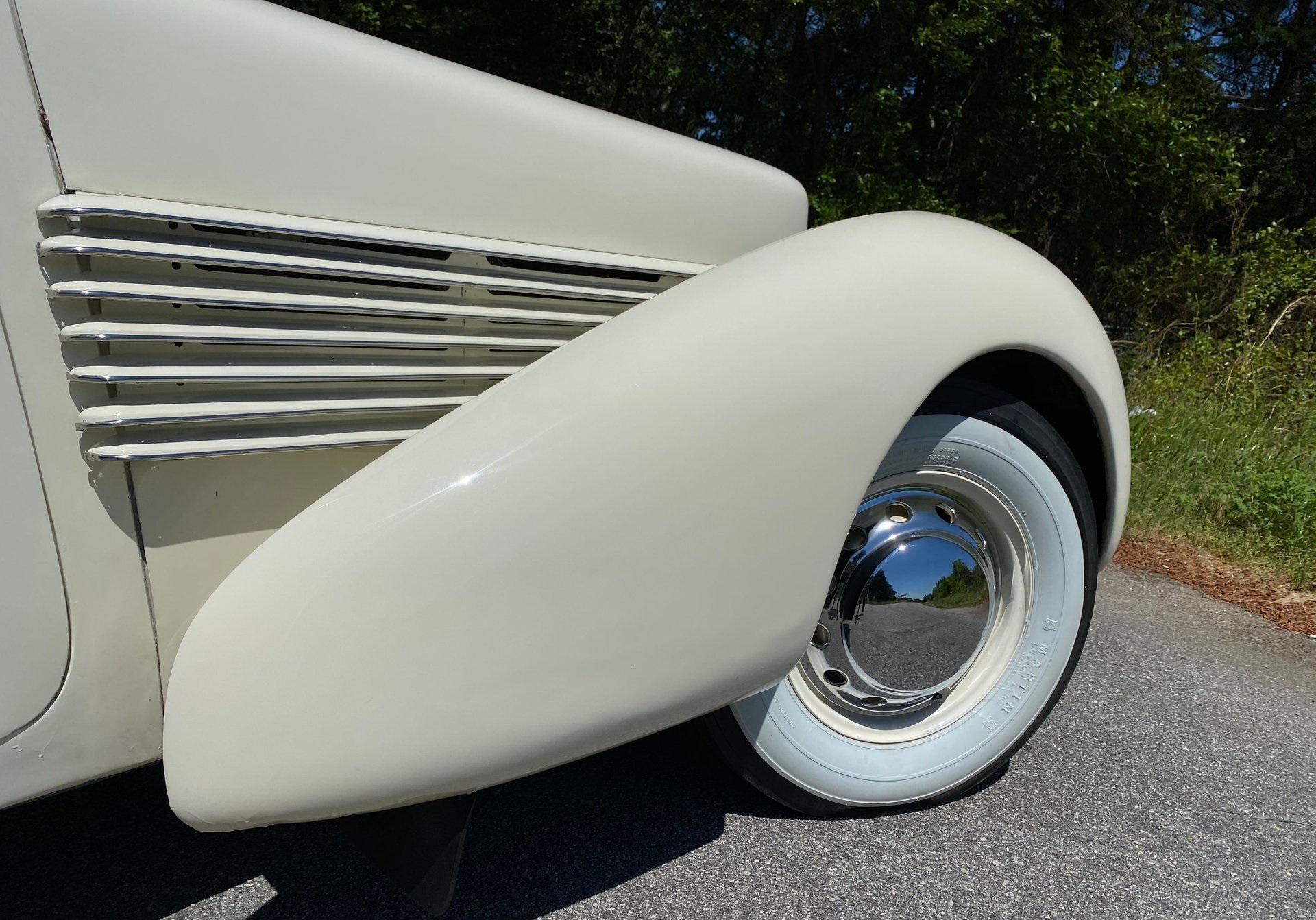
The wide doors and low seats make this a very easy car to enter and leave and with the hood up, it is a very civilised place to sit. We didn’t try any rough surfaces but the fully independent front end using trailing arms and torsion bars gave a firm, more controlled ride than some of the soggy products from either side of the Atlantic which wobbled around the roads of the 1930s.
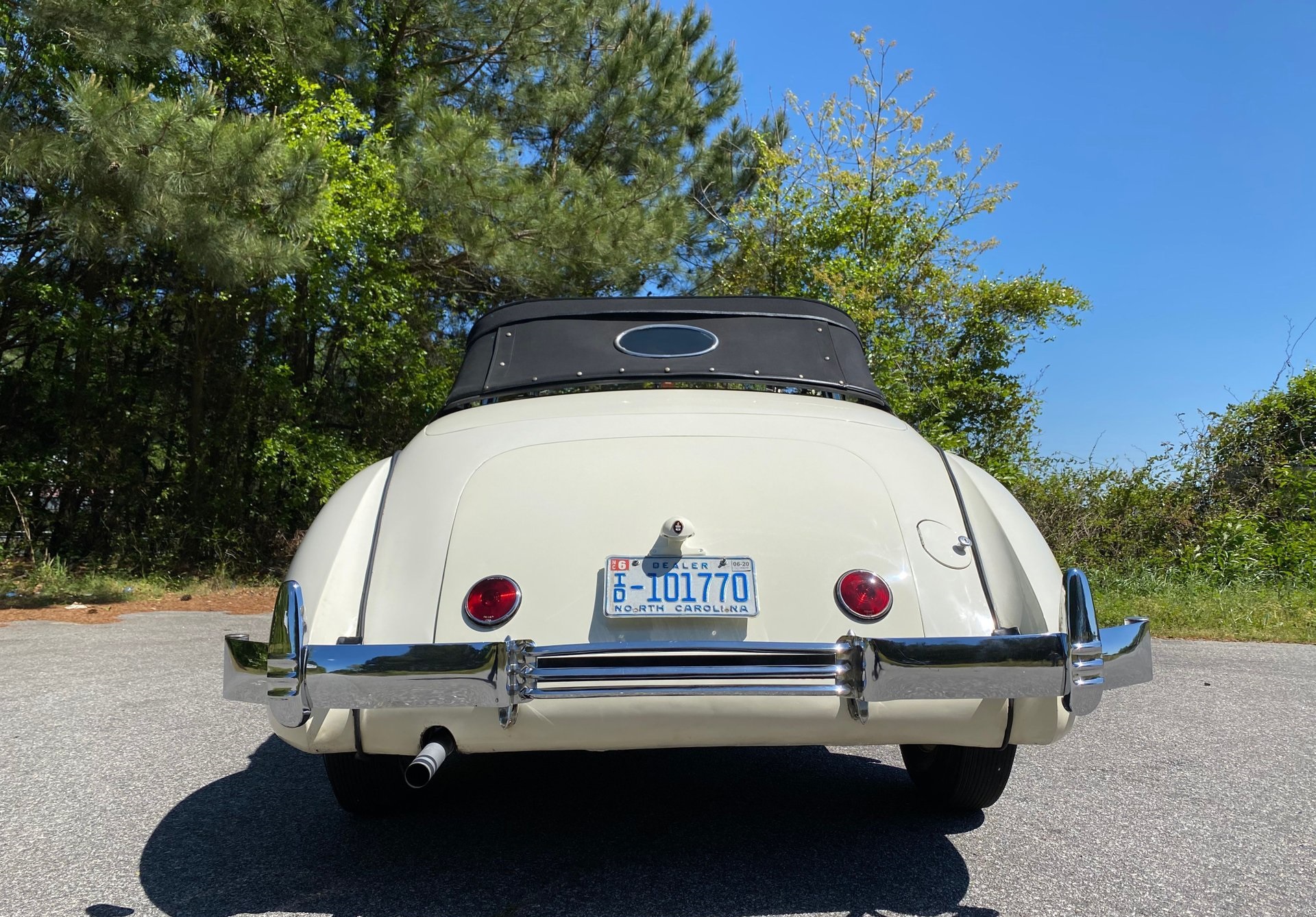
As a styling exercise, the Cord 810 is quite simply sublime. The engineering behind it is equally cutting edge for the era. It really was just the lack of funding to make sure the finished product had the bugs ironed out and was fit for sale to the public which let it down and spelt the end of the Auburn/Cord/Duesenberg triumvirate. Of course today, a restored Cord isn’t expected to provide daily transport for its owner and if treated with respect, is as drivable as it is spectacular. I am hoping that owner has me back for a demonstration of it where it belongs, back on the highway and turning heads.
